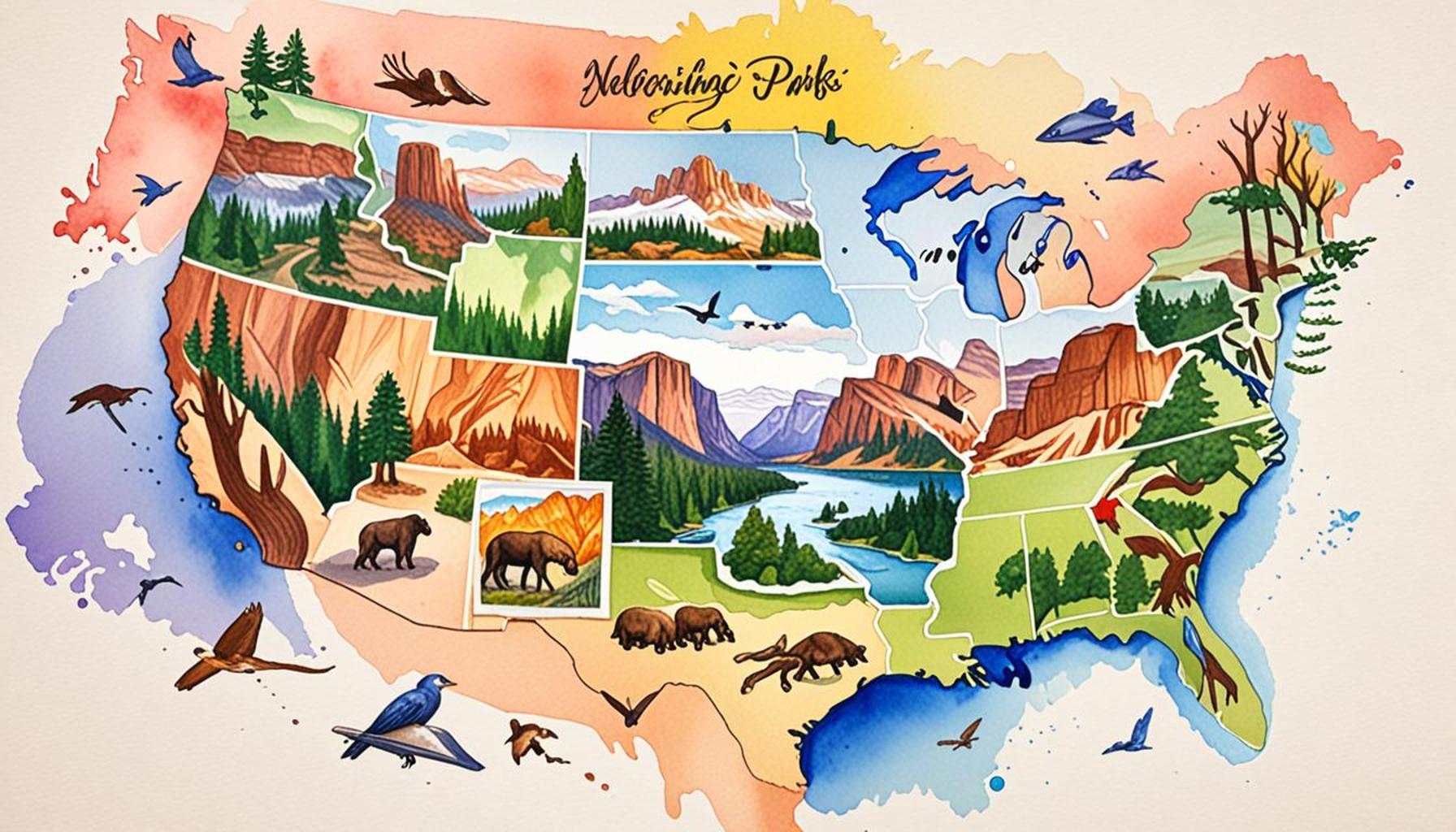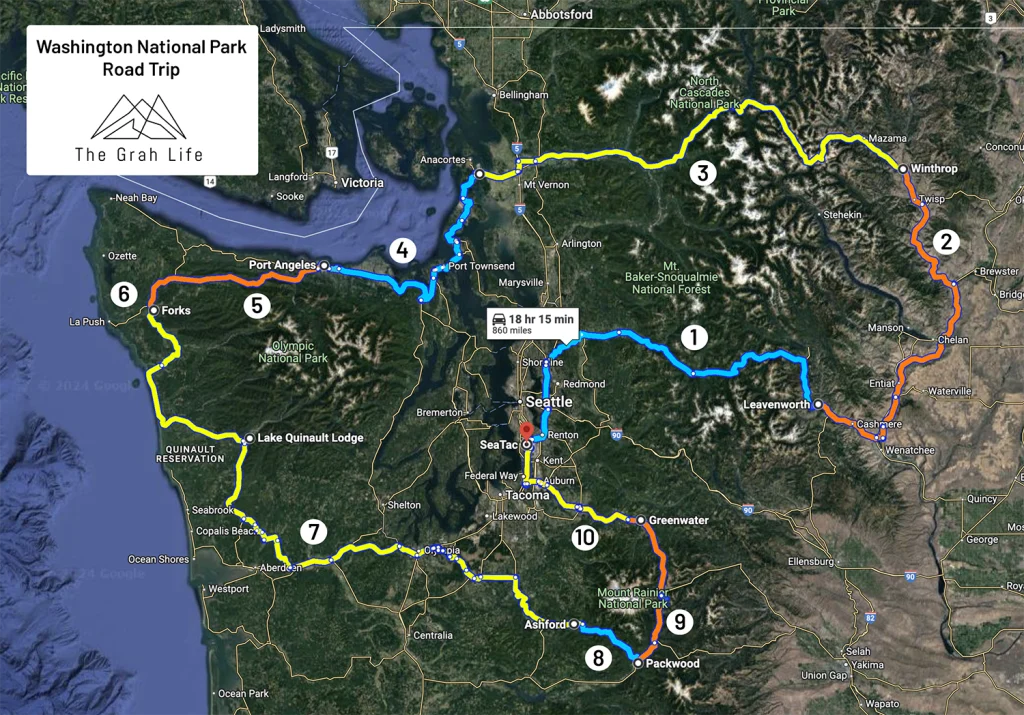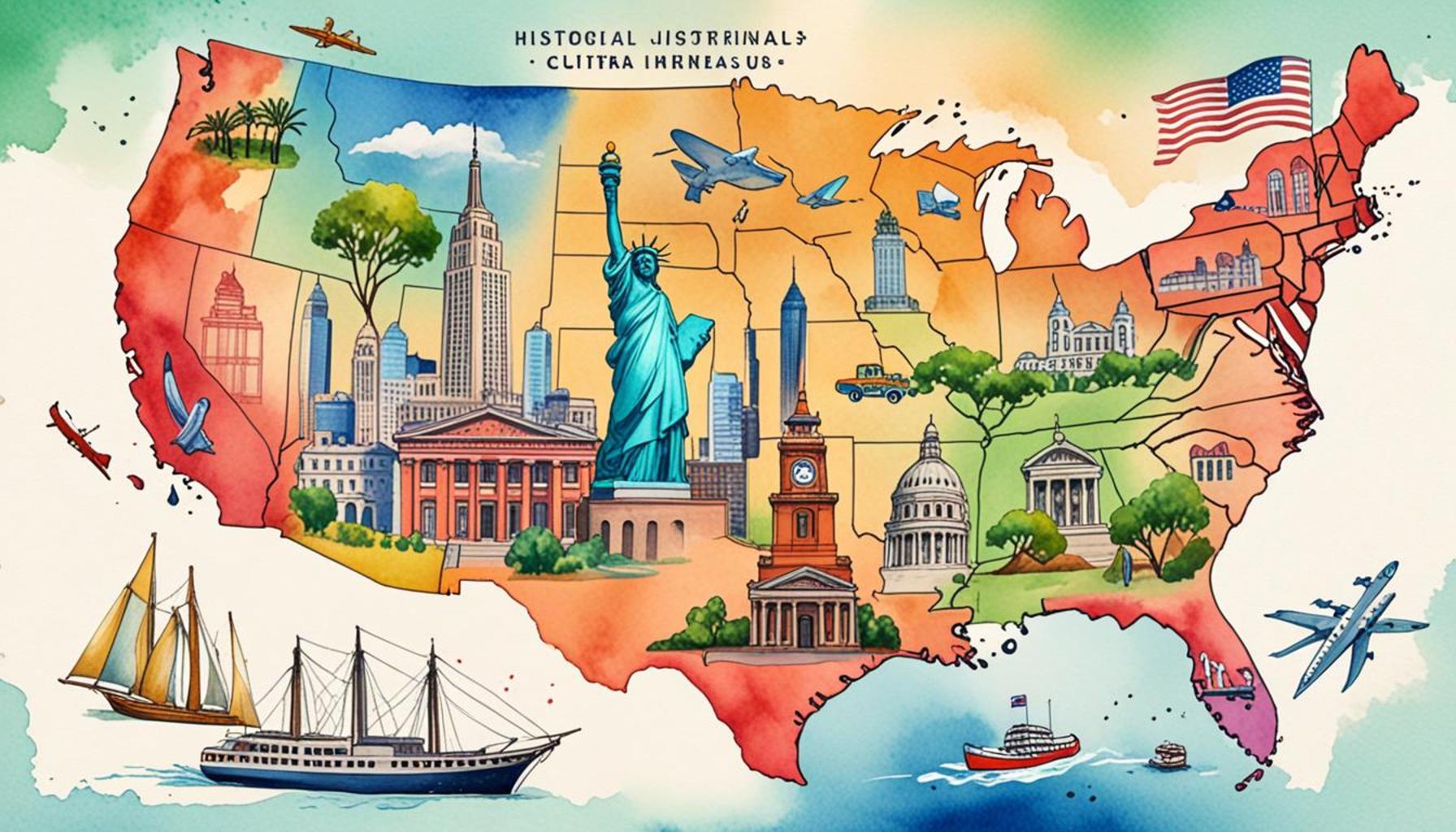Exploring National Parks: Accessible Travel Itineraries in the USA

Explore the Wonders of Accessible National Parks
The United States is home to over 400 National Parks, showcasing a remarkable array of natural wonders, from towering mountains to lush forests and vast deserts. Each park not only provides breathtaking landscapes but also serves as a haven for diverse wildlife and a rich tapestry of cultural heritage. For travelers who require accessible options, these parks have made great strides in ensuring that everyone can enjoy their offerings, regardless of physical limitations.
Accessibility in national parks is more important than ever, as it allows families, solo adventurers, and groups to experience the beauty of nature together. This article offers an in-depth exploration of accessible travel itineraries tailored to meet the needs of various travelers, showcasing parks that prioritize inclusivity and provide resources to enhance visits.
Key Features of Accessible National Parks
Here are some features that highlight the commitment of national parks to accessibility:
- Accessible Trails: Many parks, such as Yosemite National Park in California and Acadia National Park in Maine, offer paved paths and wheelchair-accessible routes. These trails allow everyone to experience stunning views and scenic landscapes without the worry of uneven terrain.
- Adaptive Recreation: Innovative programs are tailored specifically for individuals with mobility challenges. For instance, the Grand Canyon National Park has implemented adaptive river rafting and camping experiences designed to fully immerse visitors in the park’s breathtaking environment.
- Visitor Centers: Designed with inclusivity in mind, many visitor centers across parks are equipped with ramps, elevators, and assistive devices like audio guides and visual displays to enhance your experience while learning about the park’s history and ecology.
To further assist travelers, this article outlines customized itineraries based on your travel style. Whether you’re a family with young children, a solo explorer seeking solitude, or a group of friends looking for adventure, these suggested paths lead through some of the most beautiful and accessible parks in America. For example, the Everglades National Park features a mixture of guided tours and accessible facilities, allowing larger groups to comfortably explore its unique ecosystem together.
As we journey through various national parks across the nation, we will provide practical tips for maximizing your visit. We aim to inspire individuals to discover the breathtaking wonders that the great outdoors has to offer. So, as you plan your adventure, remember that there are countless accessible opportunities waiting to be embraced by everyone.

DISCOVER MORE: Click here for dreamy getaway ideas
Accessible Adventures Await: Planning Your Journey
When it comes to exploring the great outdoors, the experience should be open to everyone. The accessibility initiatives across America’s national parks have transformed these natural treasures into inclusive spaces. With the right information, visitors can discover how to navigate these parks comfortably and safely. From perfectly paved paths to specialized facilities, below are some key destinations and their corresponding accessibility features that will make your visit memorable.
Top Accessible National Parks in the USA
Here’s a closer look at some of the most accessible national parks that cater to all travelers, whether they are seeking adventure, relaxation, or family fun:
- Yosemite National Park – California
Famous for its stunning granite cliffs and waterfalls, Yosemite has taken extensive measures to ensure accessibility. With over 12 miles of accessible trails, visitors can enjoy spectacular views without barriers. Additionally, the park’s visitor center offers accessible restrooms, parking, and assistive listening devices for ranger-led programs.
- Acadia National Park – Maine
Acadia is lauded for its commitment to inclusivity. The park features a stimulating series of accessible trails, including the 3.5-mile-long carriage roads designed for easy mobility. Beyond trails, the park offers accessible picnic areas and scenic viewpoints, ensuring that everyone has the chance to embrace its rugged beauty.
- Great Smoky Mountains National Park – Tennessee/North Carolina
This iconic park has invested significantly in accessibility across its numerous attractions. The Oconaluftee Visitor Center includes accessible exhibits, and the trails around the visitor center feature hard-packed surfaces conducive to wheelchair travel. With diverse landscapes ranging from lush forests to serene streams, it provides a wonderful opportunity for all adventurers.
Many of these parks not only focus on physical accessibility but also offer programs that engage all visitors. For instance, Joshua Tree National Park in California hosts various ranger-led programs specifically designed for individuals with visual or hearing impairments, allowing all guests to experience the park’s unique desert ecosystem.
Planning an accessible itinerary does not have to be overwhelming. Prepare by checking each park’s official website where accessibility information is usually comprehensive and up-to-date. Additionally, be sure to reach out to local organizations proficient in accessible travel for resources and support they’ll connect you to useful services.
In summary, embarking on an accessible adventure in our national parks allows everyone to share in the wonders of nature. Armed with knowledge about the best parks and their offerings, your dream trip awaits, filled with breathtaking views and unforgettable experiences together.
| Advantage | Description |
|---|---|
| Inclusive Spaces | Many national parks are equipped with accessible facilities, ensuring that everyone can enjoy nature. |
| Guided Tours | Specialized tours are available, providing tailored experiences for visitors with different mobility needs. |
Exploring national parks offers a remarkable opportunity to connect with nature while ensuring that the itineraries are designed for accessibility. Engaging with a park’s rich biodiversity need not be hindered by mobility challenges, as emerging services provide critical support. By prioritizing inclusive spaces, parks not only remove barriers but actively invite all visitors to appreciate scenic views, hike gentle trails, and enjoy serene picnic spots.Moreover, the enhancement of guided tours specifically curated for accessibility is revolutionizing the travel experience. These tours offer an enriching way to engage with park rangers and naturalists who provide insights into flora and fauna, ensuring that everyone shares in the joys of exploration. Such initiatives fuel the desire for wider access and inclusion, promoting a sense of community among travelers seeking adventure.
DIVE DEEPER: Click here to discover more about scenic road adventures</
Travel Tips for an Effortless Experience
When planning an accessible travel itinerary in the national parks, preparation is key. Various components can enhance your adventure, ensuring you make the most out of your visit without stress.
Transportation Options
Getting to and around national parks can sometimes be challenging, especially for travelers with mobility concerns. Many parks are accessible by bus or shuttle services, which have been designed to accommodate wheelchairs and other mobility aids. For instance, the Yosemite Area Regional Transportation System offers accessible buses throughout the park, allowing visitors to explore different highlights comfortably. Additionally, checking in advance with Amtrak, which services several park locations, can provide helpful information about accessibility on train routes.
Camping and Lodging Choices
For those wishing to immerse themselves in nature overnight, accessibility in camping facilities is critical. Many parks feature accessible campgrounds equipped with facilities such as paved paths, accessible fire pits, and restrooms. Denali National Park in Alaska has designated accessible campsites and offers shuttle services to key spots within the park. It’s always advisable to reserve accommodations ahead of time and directly inquire about accessibility features to avoid any surprises on arrival.
Guided Tours and Experiences
For an even more enriching experience, engage with accessible guided tours offered by local organizations in many parks. These tours often tailor their experiences to accommodate individuals with varying needs, providing insights from knowledgeable guides. For instance, Zion National Park provides accessible ranger-led programs focusing on the park’s diverse geology and ecosystem, ensuring everyone can learn and enjoy the beauty of the surroundings.
Essential Items to Pack
When embarking on your adventure, consider packing essential items that can enhance your experience. A mobility aid can improve comfort and accessibility, making trails more manageable. Items such as portable ramps for navigating uneven surfaces, a water bottle with easy access, and snacks designed for energy will ensure you are well-prepared. Don’t forget personal medical supplies, including extra prescriptions, in case of emergencies.
Technology at Your Fingertips
With advancements in technology, mobile apps designed for outdoor navigation and accessibility resources are increasingly available. Consider downloading apps such as AccessNow, which provide essential information on accessible locations and trails at various parks. These tools help you plan your itinerary effectively and ensure that you take full advantage of the accessibility features available to you.
As national parks continue to enhance their accessibility measures, the opportunities for unforgettable experiences in nature grow exponentially. With the right planning, travelers can embark on a journey full of mesmerizing landscapes and inclusive activities across the country’s most scenic locations.
DIVE DEEPER: Click here to discover luxurious cruise itineraries
Conclusion
Exploring national parks in the USA doesn’t have to be a daunting task for those seeking accessible travel itineraries. With increasing efforts to make these natural wonders accommodating for all, the opportunities for diverse experiences are greater than ever. From stunning vistas at Grand Canyon National Park to tranquil forests in Tahoe National Forest, a myriad of destinations await those who take the time to plan effectively.
As we’ve explored, essential considerations like transportation options, camping and lodging choices, and guided tours can significantly enhance your journey. Identifying resources like the shuttle systems in popular parks or confirming the accessibility of accommodations can ensure a seamless experience without compromising the joy of nature exploration.
Moreover, leveraging technology can pave the way for easier navigation and planning. Applications that highlight accessible trails and amenities, along with pre-emptive inquiries to park services, can offer a peace of mind that transforms your adventure.
Ultimately, travel is about connection—both with nature and with ourselves. By breaking down barriers and embracing inclusivity, we open doors to incredible experiences. So pack your gear, grab your technology, and embark on a journey that cherishes the beauty of the great outdoors, no matter your mobility needs. Together, we can ensure that the breathtaking landscapes of America’s national parks are accessible to all who wish to explore them.



